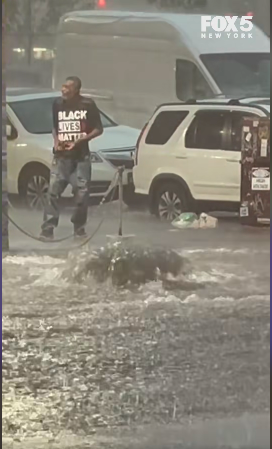METRO CITY SUBMERGED: Historic Flash Flood Traps Commuters, Unearths Decades-Old Warning – A City Under Water, A Secret Revealed!
Last night, a relentless storm transformed Metro City’s streets into rivers and its iconic subway system into an unprecedented underwater nightmare. A catastrophic flash flood emergency left millions of commuters stranded, terrified, and grappling with a crisis that felt both sudden and chillingly inevitable.
The chaos erupted around 7:30 p.m., as raw, terrifying video footage flooded social media. One viral clip showed a cascading waterfall of murky water surging down a main subway entrance, submerging platforms in minutes. Another photo depicted commuters standing precariously on train seats, inches from rapidly rising floodwaters that had breached the carriages. This wasn’t just a delay; it was a desperate fight for safety.
The Chaos Unfolds: Trapped Beneath the Waves
Across Metro City, multiple subway stations were overwhelmed. Historic Grand Central Station and the 14th Street-Union Square complex saw lower levels completely submerged, trapping hundreds. Service on nearly half of the city’s subway lines was severely disrupted or suspended. Commuters quickly shifted from frustration to fear as water rose underground.
“It felt like the walls were closing in,” recounted Maria Rodriguez, 45, a paralegal trapped on a stalled A train. “People were screaming, some were crying. We just sat there, watching the water rise, wondering if we’d be able to breathe.”
College student Ben Carter, 20, described seeing “a wave of water come down the stairs” at Grand Central, forcing everyone to scramble for higher ground.
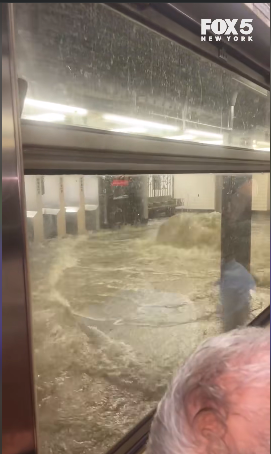
The “Why”: A Deluge, A Legacy, and A Buried Warning
Officials initially blamed a “once-in-a-century” rainfall event, with over 5 inches of rain falling in just two hours – far exceeding the city’s aging drainage capacity. The city’s century-old subway system simply couldn’t cope.
But the true “why” runs deeper. Hours after the flooding, retired civil engineer, Dr. Evelyn Hayes, 78, revealed a shocking truth. She presented a faded, water-stained copy of a confidential municipal report from 1995 she had co-authored. The report explicitly warned the city council of the subway system’s severe vulnerability to “catastrophic inundation” from extreme rainfall, citing specific design flaws and inadequate pumping infrastructure. It even identified the very stations that flooded most severely last night.
“We warned them,” Dr. Hayes stated, voice trembling. “The report was shelved, deemed ‘too expensive’ and ‘unnecessary.’ They called it alarmist.”
This revelation sent shockwaves through the city. The “once-in-a-century” event was a tragedy foretold, a consequence of decades of overlooked warnings and underfunded infrastructure. Public outcry demanded accountability.
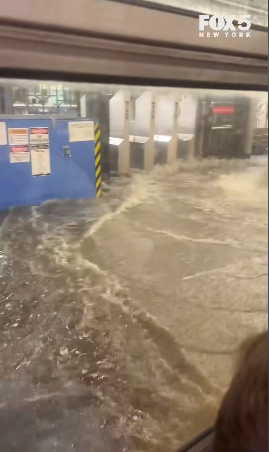
The Aftermath & Response: A City Rallies
Emergency services worked through the night, rescuing thousands of stranded commuters. Firefighters used inflatable boats, and transit workers guided people through flooded tunnels. Miraculously, no fatalities were reported, though dozens suffered minor injuries and trauma.
Mayor Lena Chen declared a state of emergency, acknowledging the infrastructure failures. “We failed our citizens tonight,” she stated, promising a full investigation and immediate action. “Our city’s future depends on it.”
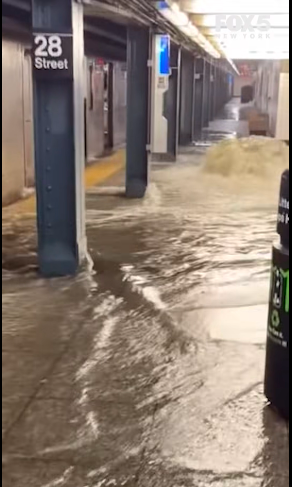
💡 Helpful Tips: Navigating the Next Storm Safely
This harrowing event highlights urban vulnerability to extreme weather. Here are crucial tips for safety during flash floods and transit emergencies:
Stay Informed, Officially:
- Subscribe to Alerts: Sign up for your city’s emergency alert system.
- Follow Official Channels: Rely only on official sources (National Weather Service, local emergency management, transit authorities).
- Check Before You Go: Delay travel if flash flood warnings are in effect.
During a Subway/Transit Flood:
- Stay Calm, Stay Put (Initially): Do not self-evacuate unless instructed.
- Seek Higher Ground: Move to the highest available area on a platform.
- Follow Instructions: Listen to announcements from staff.
- Do NOT Touch Third Rail: It carries lethal electricity.
- Emergency Exits: Use only if directed.
On Flooded Roads:
- Turn Around, Don’t Drown: Never drive, walk, or cycle through floodwaters. Six inches can knock you down, a foot can sweep a car away.
- Hidden Dangers: Floodwaters hide debris, downed power lines, and washed-out roads.
- Seek Higher Ground: If trapped in your car, abandon it and move to higher ground if safe.
Prepare a Commuter Emergency Kit:
- Waterproof Bag: Keep essentials in a small, waterproof bag.
- Portable Charger: For your phone.
- Snacks: Non-perishable energy bars.
- Small First-Aid Kit: Band-aids, antiseptic wipes, personal medications.
- Whistle/Flashlight: For signaling and visibility.
- Small Towel/Blanket: For warmth.
- Cash: For emergencies.
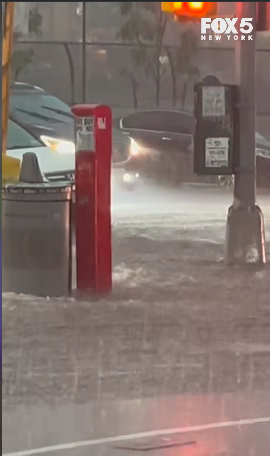
A Wake-Up Call for Resilience
Metro City’s flood nightmare is a sobering reminder of how quickly everything can change, and how critical resilient infrastructure and proactive planning are. It’s a wake-up call for cities worldwide to address aging systems and heed expert warnings. For citizens, it’s a testament to their resilience and a powerful lesson in preparedness. The waters may recede, but the questions, and the determination to build a safer, more prepared future, will remain.
Were you affected by the Metro City floods? Share your story and safety tips below! 👇
#MetroCityFloods #FlashFlood #SubwayCrisis #UrbanResilience #ClimateChange #Infrastructure #EmergencyPreparedness #StaySafe #CityUnderWater #ViralNews
Beta feature
Beta feature



